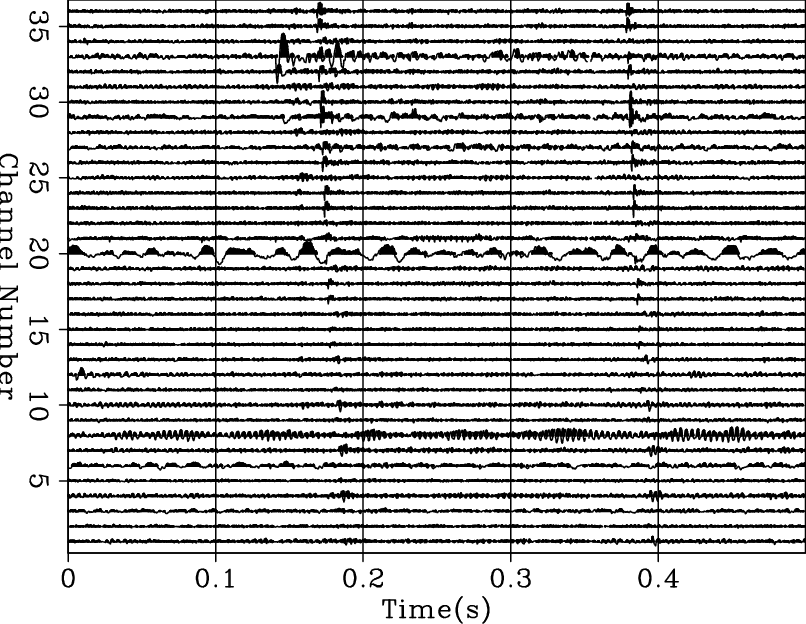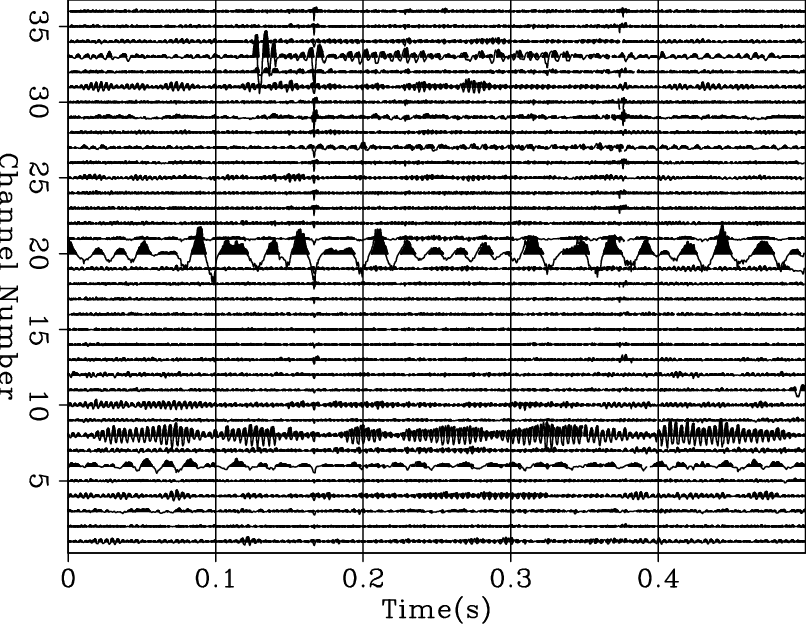|
|
|
|
Aligning microseismic reflections for imaging |
We used our running window cross-correlation program to cross-correlate direct P arrivals with whole seismograms with the hope of finding P-reflections. Results of such an approach can be seen on Figure 4(b). We can see in this figure that on the original seismogram, the P reflection seen at around 2.2s was not apparent and was actually brought up by the cross-correlation of the direct P with the whole seismogram. It turns out that the stronger the P arrival we use in cross correlations, the more likely we are to find an arrival that can be a P-reflection.


|
|---|
|
Bonner0209,B0209-p
Figure 4. a) seismogram with P-reflection not strong enough to be seen b) cross-correlation result with direct P-wave, with a possible reflection appearing at about 0.23s. |
|
|
|
|
|
|
Aligning microseismic reflections for imaging |